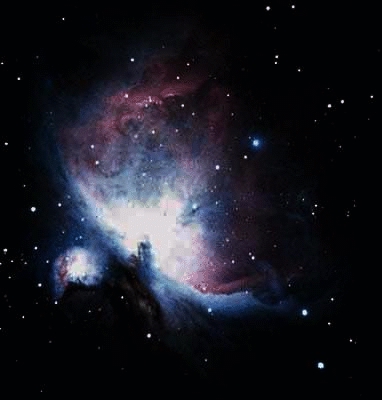The first astrophoto taken at the observatory! The Andromeda Galaxy spans a full three degrees across, far too big for most telescopes. This image, about one degree across, shows only the central part. The "big fuzzy star" at upper left is a small companion galaxy.
Photo by John Mahony. 35 minute exposure on Kodak Royal Gold 1000 film with the 12" scope at f/5.
M13, the great globular cluster in Hercules. Hundreds of thousands of stars are packed into a region about 150 light years across. At about 25,000 light years away, it is 1/4 of the way across the galaxy. Photo by John Mahony.
60 minute exposure on Kodal Royal Gold 1000 film with the 12" scope at f/20.
This remarkable image of M51 was taken by Doug Sanqunetti with his own equipment on the grounds of the observatory. He uses a 10" Meade Schmidt-Cassegrain telescope (slightly smaller version of the former 12" scope at the observatory), mounted on a Takahashi NJP mount, with a Starlight Xpress MX916 CCD camera. This pair of galaxies is about 15 million light years away, and the larger one is about 50,000 light years across. The Whirlpool Galaxy was the first in which the spiral structure of galaxies was detected, by Lord Rosse, using his 6 foot aperture "Leviathan" telescope at Birr Castle, near Parsonstown, Ireland, in 1845.





